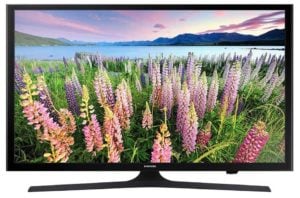When it comes to
shopping for Multisystem 4K Televisions, there are a number of features which are worth comparing. Some are obvious, such as resolution, size, or smart features. Refresh rates are likely not the first thing considered when shopping for new televisions, but they
should be among them
. Today, I will be breaking down refresh rate and explaining why it is a significant feature in multisystem TVs.

What's a Refresh Rate?
On the most basic level, refresh rates affect the appearance of objects in motion on a screen. That's not very informative, of course, as there are quite a few details which go into this. The first thing one needs to understand is "motion resolution", which is not the same as a TV's default resolution. On old LCD televisions, images blurred when in motion due to the response time required for pixels to change. Nowadays, this is not much of an issue. Instead, the issue is how our brains respond to the images they interpret. Some individuals notice, and despise, motion blur. Others do not, and simply do not understand the problem.
As someone who despises motion blur, I can describe it somewhat. While in motion, sometimes an image will literally blur as it moves across the screen. What makes televisions with high refresh rates unique is
how they deal with this problem. There are a couple of methods, but the most common involve turning the TV's backlight, or portions of it, off between frames. This technique, called 'backlight flashing', can reduce motion blur and thus lead to an improved image overall. The dimming is done at such a rapid rate that the dark screens are imperceptible to the naked eye, which does make it an effective method.
The other commonly used technique to reduce motion blurring is called frame insertion (or frame interpolation). As opposed to dropping empty frames between others occasionally, this method actually creates new entirely new frames based upon those it falls between. As a result, the final output image is much smoother than one sees as a result of alternative methods.
What Does it All Mean?
The short answer to all of this is that any TV with a refresh rate greater than 60 Hz is 'artificially' enhancing it. Contemporary video is recorded at either 24 frames per second or approximately 60. Anything over 60, then, is increased through methods such as those discussed above. If you are someone like myself who finds motion blur to be highly distracting, it is worth your time to seek out higher refresh rates. Not only will you save yourself some headaches, you will be enjoying the optimal 4K Multisystem Television experience.
Are you interested in shopping for multisystem televisions?
220-Electronics.com is the best place to buy high quality multisystem TVs. The staff at
220-Electronics.com are highly knowledgable and dedicated to providing the best equipment for their customers. Contact the experts at
220-Electronics today to get started!




